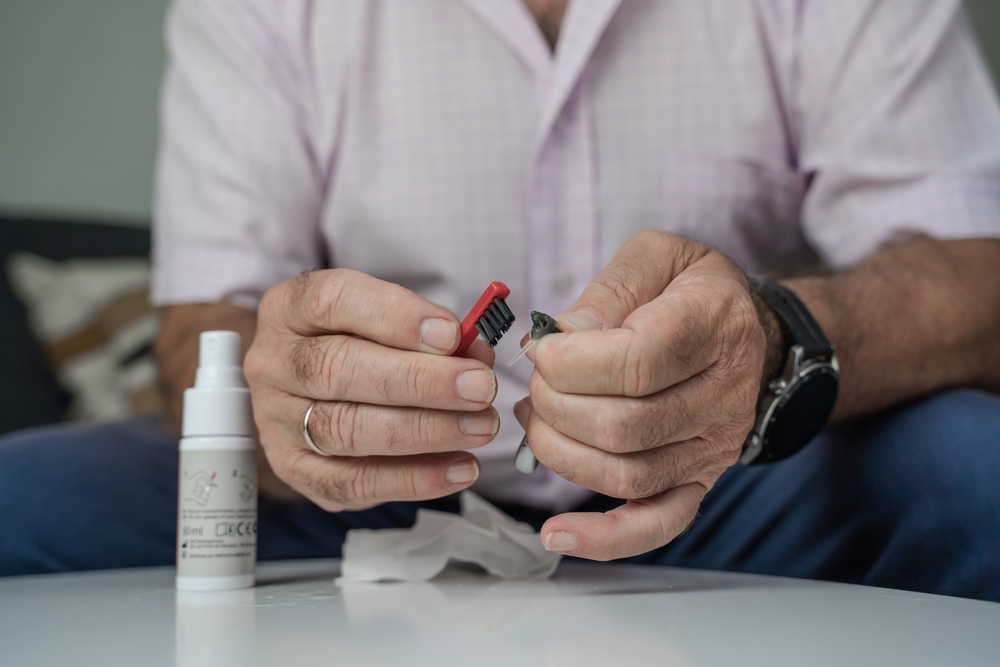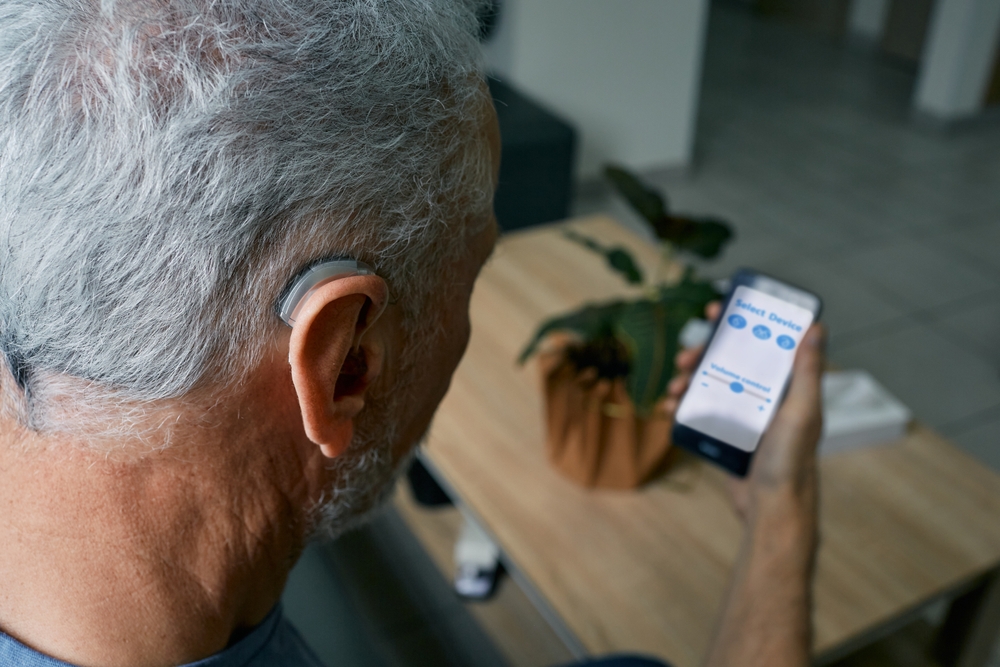Hearing aids are essential devices that improve your hearing and enhance your quality of life. However, like any technological investment, they require routine care and cleaning to ensure optimal performance. Regular maintenance can significantly extend their lifespan and ensure you’re hearing clearly. In this guide, we’ll walk through the steps to properly clean and care for your hearing aids.
Routine cleaning and professional tune-ups
To keep your hearing aids functioning at their best, daily or weekly cleaning is essential. A quick cleaning routine doesn’t take much time but goes a long way in preserving sound quality and device longevity.
In addition to your regular at-home care, periodic professional maintenance from a hearing specialist is recommended. Think of it like visiting the dentist—while brushing and flossing help, professional cleanings ensure the best results. Typically, it’s advised to bring your hearing aids in every six months for a deep clean by a specialist. This not only keeps them in prime condition but also helps identify any potential issues early.
Basic care tips for everyday use
Taking a few simple precautions can greatly enhance the longevity and performance of your hearing aids. Consider the following guidelines to avoid common pitfalls:
- Keep Them Dry and Chemical-Free: Moisture and chemicals can be detrimental to your hearing aids. Be sure to remove them before showering, swimming, or applying products like hairspray or perfume.
- Clean Before Bed: Cleaning your hearing aids at night gives them a chance to dry completely before you wear them again in the morning.
- Protect from Temperature Extremes: Avoid exposing your hearing aids to harsh weather conditions. If it’s particularly cold or hot, leave your devices indoors rather than bringing them outside.
- Safe Storage: When not in use, keep your hearing aids stored in a protective case or in their charging unit to prevent exposure to dirt or physical damage.
- Wash Hands Before Handling: Always clean your hands before touching your hearing aids to avoid transferring oils or debris that could interfere with their function.
- Use a Dehumidifier: Storing your hearing aids in a dehumidifier at night can help keep them dry and free of moisture that might cause malfunction.
Tools for proper hearing aid care
Maintaining your hearing aids requires the right tools. Consider investing in a hearing aid care kit, which may include the following:
- Cleaning brush: For removing dust and wax buildup.
- Slim tube cleaner: To clear out any debris lodged in the hearing aid tubes.
- Wax pick or loop: For gently removing earwax from small crevices.
- Microfiber cloth: Perfect for wiping down the surface of your hearing aids.
- Hearing aid dryer: Helps eliminate moisture, especially after a long day of use.
Your hearing specialist can guide you on the best tools and techniques to keep your hearing aids in excellent condition.
Step-by-step cleaning based on hearing aid type
Different types of hearing aids require slightly different cleaning methods. Here are tailored cleaning instructions for two common types of hearing aids: In-The-Ear (ITE) and Behind-The-Ear (BTE).
How to clean In-The-Ear (ITE) hearing aids
- Brush Debris Away: Holding your hearing aid face down, gently brush away any wax or debris that has accumulated on the surface.
- Remove Wax with a Loop: Use a wax loop or pick to carefully extract any remaining earwax.
- Clear the Ventilation Tube: Push a slim cleaning tool through the vent tube to ensure there’s no blockage.
- Wipe the Exterior: Use a soft microfiber cloth to wipe down the entire outer surface, removing any residue.
How to clean Behind-The-Ear (BTE) hearing aids
- Detach the Tubing: Begin by separating the tubing from the hearing aid itself.
- Clean the Aid: Hold the hearing aid face down and gently brush away any wax or dirt, particularly around the receiver and microphone.
- Use a Wax Pick: Remove any stubborn wax that remains with a loop or pick.
- Clean the Microphone Openings: Brush the microphone openings to ensure they’re free of debris.
- Clear the Tubing: Run a pipe cleaner through the tubing to remove wax or moisture, then clean the outside with a cloth.
- Soak the Ear Mold: Remove and soak the ear mold in warm, soapy water to loosen any buildup. Use a tubing blower to remove excess moisture and dry with a clean cloth.
- Reassemble and Test: Once everything is dry, reassemble your hearing aids and test to make sure they’re working properly.
Preventing ear infections through proper hygiene
Beyond maintaining your devices, it’s equally important to keep your ears clean. Earwax buildup not only interferes with your hearing aids but can also lead to discomfort and infection. Regularly cleaning your ears and hearing aids will help reduce the risk of these issues.
Schedule a professional hearing aid cleaning
If you have any concerns about your hearing aids or would like to schedule a professional cleaning, find a hearing specialist in your area. Professional maintenance is key to ensuring your hearing aids continue to serve you well for years to come.


